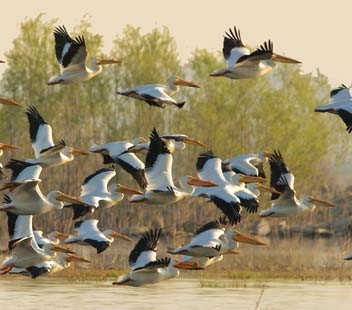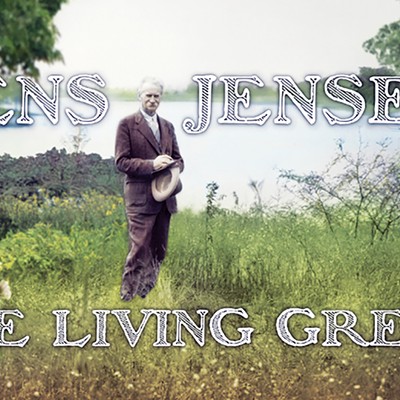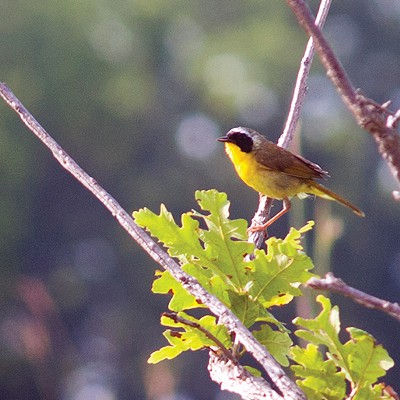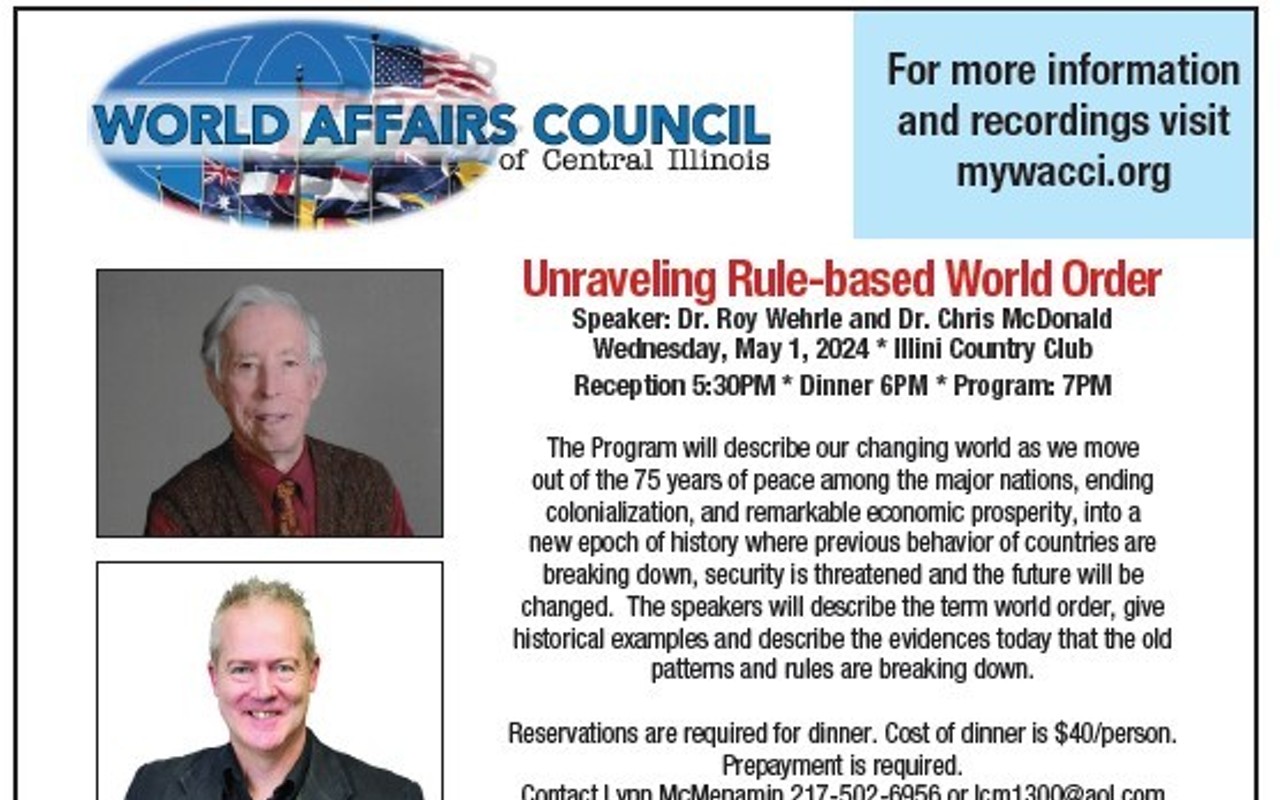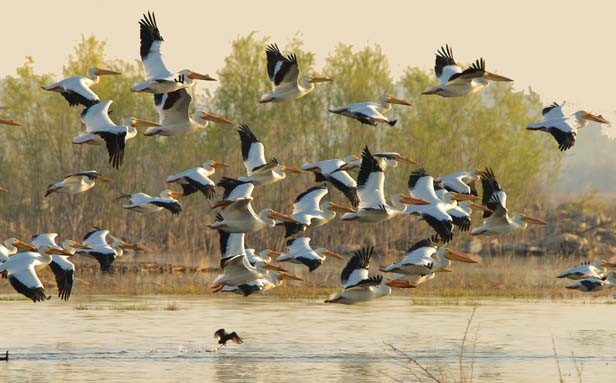
The shallow lakes and swamps are glorious in
their season with the American lotus and the
white water lily. Waterfowl abound, and fish lie
in the shallows, basking in the summer sun.
–Stephen Forbes, Illinois Natural History Survey, 1896
In 2000, The Nature Conservancy purchased 7,100 acres of farmland approximately 55 miles northwest of Springfield near Havana and Lewistown, Ill., with the intent of returning it to a semblance of its former state. It would be one of the country’s largest wetland restoration efforts. This land in the Illinois River Valley was given a new name – Emiquon – chosen in tribute to the Native Americans who had inhabited the area in the ancient past. On my first visit in 2004, with the restoration efforts still in the planning stage, I found myself staring out at barren fields and abandoned farm structures, trying my best to imagine the scene described by Stephen Forbes in 1896 – a scene The Nature Conservancy hoped to replicate.
On June 4, 2011, the day marking the grand opening of the Emiquon Preserve, no imagination is needed.
It is a day of blazing sun and blazing temperatures, yet a crowd of people gathers to celebrate the return of water, wildlife and the opportunity to witness a sight once Illinoisans thought would never be seen again. We head across a new boardwalk that juts into the restored Thompson Lake and make our way toward the Wetland Observatory, which is temporarily acting as an elevated podium upon which are seated today’s speakers – a sampling of the people involved in the collaboration behind the transformation. There are many others who have been involved in the restoration mingling amongst the crowd and manning booths set up to display the opportunities presented by this site. The only thing hard to imagine now is the work that has been involved in returning farmland to wetland.
To understand the magnitude of the project, it is important to recall the area’s history. It stretches back 12,000 years to the Native Americans who first inhabited the area, drawn here seeking the sustenance provided by the wildlife. Waterfowl gathered here in tremendous flocks, and the floodplain acted as a nursery where plankton and many species of fish reproduced. Their young would move into the river system to create fishing so bountiful that in the early part of the 20th century the Illinois River harvest accounted for 10 percent of all fish harvested commercially in the United States. Some called it the fishing capital of the world.
It was natural that the sportsmen would follow the wildlife to what was then called Thompson Lake, but so too did the scientists. Amazingly, this area acted as the birthplace of both modern archaeology and modern ecology. It was in Havana that Stephen Forbes, “a giant of American ecology,” initiated biological investigations in 1876.
Eventually the fertility of the soil presented a lure too great to resist, and in 1924 the lakes and wetlands were drained, levees were built that separated the river from its floodplain, crops were planted and bottomland hardwood forests were cleared. The lake would be transformed into farmland – and farmland it would remain for more than 80 years.
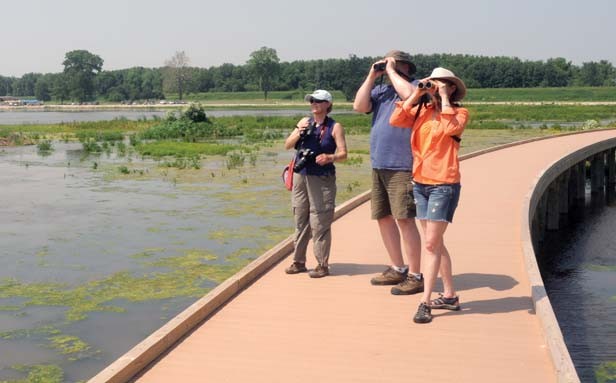
No one disputes the importance of agriculture to Illinois and its people, yet The Nature Conservancy found an incredible opportunity here. In 2000, they had the chance to purchase land for what would become their largest preserve; they found the chance to partner with the U.S. Fish and Wildlife Service who manage the nearby 3,000-acre Emiquon National Refuge; to partner with the Dickson Mounds Museum who tell the story of the area’s human and natural history; to partner with the University of Illinois Springfield, which opened the Therkildsen Field Station in 2008, as well as the Illinois Natural History Survey, which has continued to do important work since Forbes’ day. Together they would have the opportunity to undertake a restoration that could be – that would become – a model for similar projects around the world.
It has been an amazing collaborative effort, but Leslee Spraggins, state director of The Nature Conservancy, wants people to be clear that the Emiquon Preserve is not owned by the government. “People have been confused. They think this is a government place, but it is not,” she states. While the U.S. Wildlife Service’s 3,000-acre Emiquon National Wildlife Refuge is located next door, she notes it is primarily private money – $18 million from The Nature Conservancy alone – that has funded the Emiquon Preserve, with Caterpillar a vital partner. However, she is quick to acknowledge that government entities have assisted them. They have received assistance through the U.S. Department of Agriculture’s Wetland Reserve Easement Program, and the U.S. Army Corps of Engineers has provided help with planning and management. In addition, the Illinois Department of Natural Resources has assisted in restocking Thompson Lake’s waters.
Although native plants that have lain dormant beneath the ground for eight decades are re-emerging naturally since the return of the water, the restoration of fish to Thompson Lake would take human intervention. The Conservancy signed a cooperative fisheries management agreement with IDNR in 2007, and as a result nearly 2 million fish were stocked in Emiquon’s waters with many species not available from hatcheries. “DNR helped us put in native fish here that you just can’t go out and buy anywhere,” states Spraggins.
Emiquon now has 5,800 acres of wetlands, but additional adjacent restoration has taken place, with 200 acres of wet prairie and 400 acres of upland prairie being restored. Dr. Michael Wiant, director of the Dickson Mounds Museum states: “At the end of the day, if you take Chautauqua National Wildlife Refuge, Emiquon National Wildlife Refuge, and the Emiquon Preserve, you are talking about roughly 14,000 acres of Illinois River Valley which will be restored into habitat that will promote the betterment of a whole variety of species.”
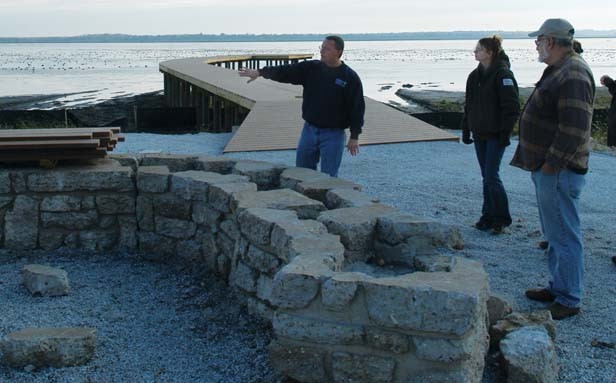
Like a replay of the historical past, people are returning in the wake of the wildlife. The sportsmen are returning to hunt and fish. The nature enthusiasts and artists come to contemplate the view and seek out new species. And, of course, scientists abound at this site. According to Michael Reuter, director of The Nature Conservancy’s North America Freshwater Program, Emiquon has drawn attention from countries around the world such as China, a nation struggling with floodplain management on the Yangtze River. “They are curious about our approach, about the way we monitor the system,” he states. He adds that they have also had people here from Colombia, Brazil, and from Zimbabwe’s African Wildlife Foundation, who came representing the Zambezi River. They were all looking for something different to learn and take back to their respective countries.
The latest addition to the site is the visitor facilities, which were only recently completed. Now people have a way to pull off of Illinois 78/97 and gain access to an Emiquon experience.
Jason Beverlin, the deputy director of The Nature Conservancy’s Illinois River Program, notes this most recent project was funded privately by the Hamill Family Foundation, which donated $3 million. “Every parking lot that you see, all the roadways, all the pavilions, the boardwalk, the walking trail, the piers – all of that was funded by the Hamill family,” he states. Beverlin notes that the most time-consuming part of the construction was the recycling of the concrete that had been on site. “All the rip rap, all of the road top, all of these concrete walls are made out of recycled concrete that was on the property. There were about 20 acres of concrete here. We broke all of that up and reused it. That took time.”
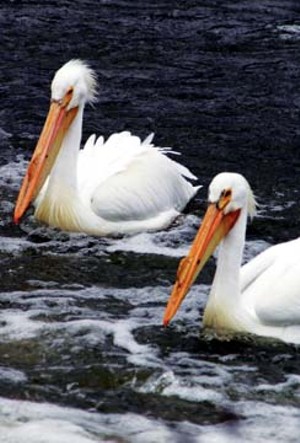
The speakers now descend the stairs and stretch out a bright red plastic strip for a ribbon cutting. The sweating and smiling crowd surges forward, the people in the back try to hold cameras above the heads of the people with cameras in front, all hoping to document the grand opening – the grand reawakening.
With the ribbon cutting over, everyone disperses to explore and read the new interpretive signs that tell the story of the site’s history and the ongoing efforts. Some of these signs are stretched below pavilions and embedded in repurposed concrete formed into sitting-height walls that Mayor King calls “artwork.” Many of the photos incorporated into the panels were taken by members of the Emiquon Corps of Discovery, a group that has been documenting the Emiquon transition through the arts – writing, painting, sketching, photography.
Other people are departing from the new canoe launch aboard a 20-person craft provided for the celebration by IDNR, and others stand with binoculars or look through the spotting scopes from the Wetland and Lakeside Observatories, seeking closer views of the birds that so recently were the stuff of legend.
Tharran Hobson, the Illinois River program restoration manager for The Nature Conservancy, has worked at the preserve to create a mosaic of habitats and states that there are now 212 species of birds documented here – woodland, wetland and prairie species. “Every wetland bird that you can imagine and some you couldn’t imagine show up here,” he states. “I’ve seen a lot of my firsts here.” He tells of seeing Common Loons, a species he had not seen before in Illinois. And his first sighting ever of a Red-necked Grebe occurred at Emiquon.
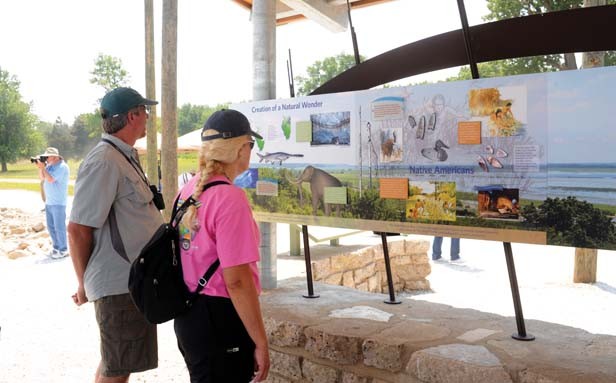
Many of us shuttle to other places of interest surrounding the Emiquon Preserve, such as UIS’s Therkildsen Station. The station, funded in part through an endowment by Alfred O. Therkildsen, is located on the other side Illinois 78/97 across from the preserve. The faculty at the station provides training for students while conducting research in the field of floodplain ecology and restoration and management strategies. “Some of us started collecting even when there were little ditches out there,” states Dr. Michael Lemke, the station’s director. “I have been tracking the microbes, and in the last four years we have seen dramatic changes in the communities.” The station’s research is combined with that of other researchers in an effort to build a comprehensive study of the Emiquon restoration and to assist in its management.
Then it is on to the Dickson Mounds Museum where we find new displays and then, finally, to a nearby bluff called Morton Ridge where we witness an ongoing archaeological excavation. “We want people to get the sense that this is a region now, which has a variety of opportunities that include everything from education programs and folk music on the weekends [at Dickson Mounds Museum] to fishing and waterfowl hunting,” states Wiant.
It seems a resounding success, yet the story is not over. And today is but a snapshot in time. Changing water levels and changing seasons will present visitors with varying experiences. “We want everyone to understand that this is a science project as much as a recreation place,” states Spraggins. “The goal is to make it like a natural floodplain. That means that sometimes there’s mud and sometimes there’s flood.” Jason Beverlin adds that there are many different water levels – some years will be great for fish, bad for birds – some years will be great for birds, bad for fish. “That’s OK,” he says. “That’s the way we want it. We are not doing this for one thing; it’s the biodiversity – the more the merrier.”

Again this area is attracting international attention and again it is acting as a fish nursery. Fishery experts have located species in habitats that are rapidly disappearing, collected them, and brought them to Emiquon, which is once again a site of fertile propagation. Many of these fish have done well and are being taken back to their original habitats.
And then there is the return of the birds….
In 1916, Jim Paul of Peoria reported, “There were thousands and thousands of ducks on the water. Somebody scared them, and when they took flight, they were so thick they completely shut out the sun . . .” In the Spring of 2011, a survey by waterfowl scientist Chris Hine of the Illinois Natural History Survey counted 101,500 snow geese in the area. Springfield’s State Journal-Register would report on March 7, 2011, in an echo of times long past, “When the snow geese lift off Thompson Lake, there are so many it can be hard to see through them.”
Plus, there is the spontaneous return of the native wetland vegetation such as the cattails and the American lotus. Dr. Wiant calls on me to imagine once again. “My gosh,” he says, “think about the adaptive strategy, about basically knowing your world well enough if you’re a lotus seed lying there, and the tractors are going back and forth over your head for 80 years. And one morning it’s wet and warm, and you say, “Hey, you know what? It’s time to put my party dress on and float to the surface!”
Wiant continues: “You don’t have to be in a frontier, in a new part of the globe, you can watch it work right here in your yard. It’s the same awe-inspiring event.”
Jeanne Townsend Handy of Springfield has a background in environmental studies and has been writing about thenatural worldand environmental issuessince 1999. She first wrote about the Emiquon Preserve for Illinois Times in November 2004.

